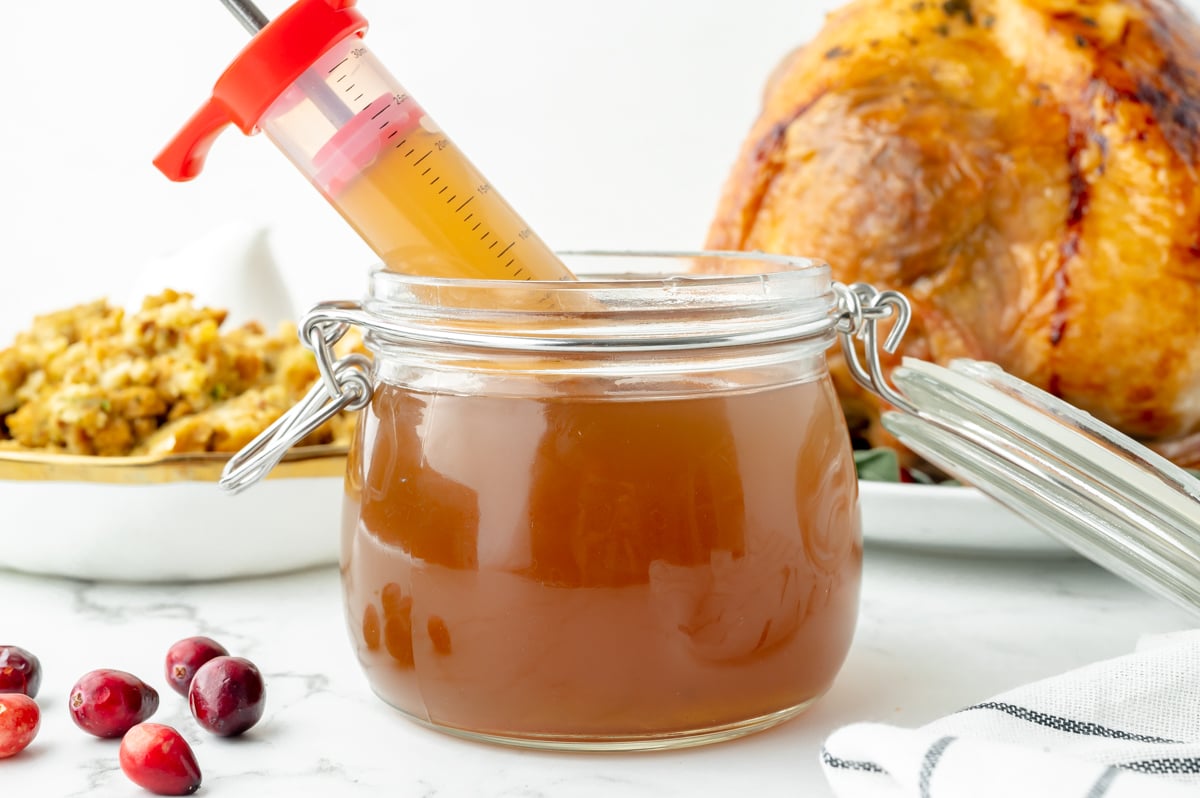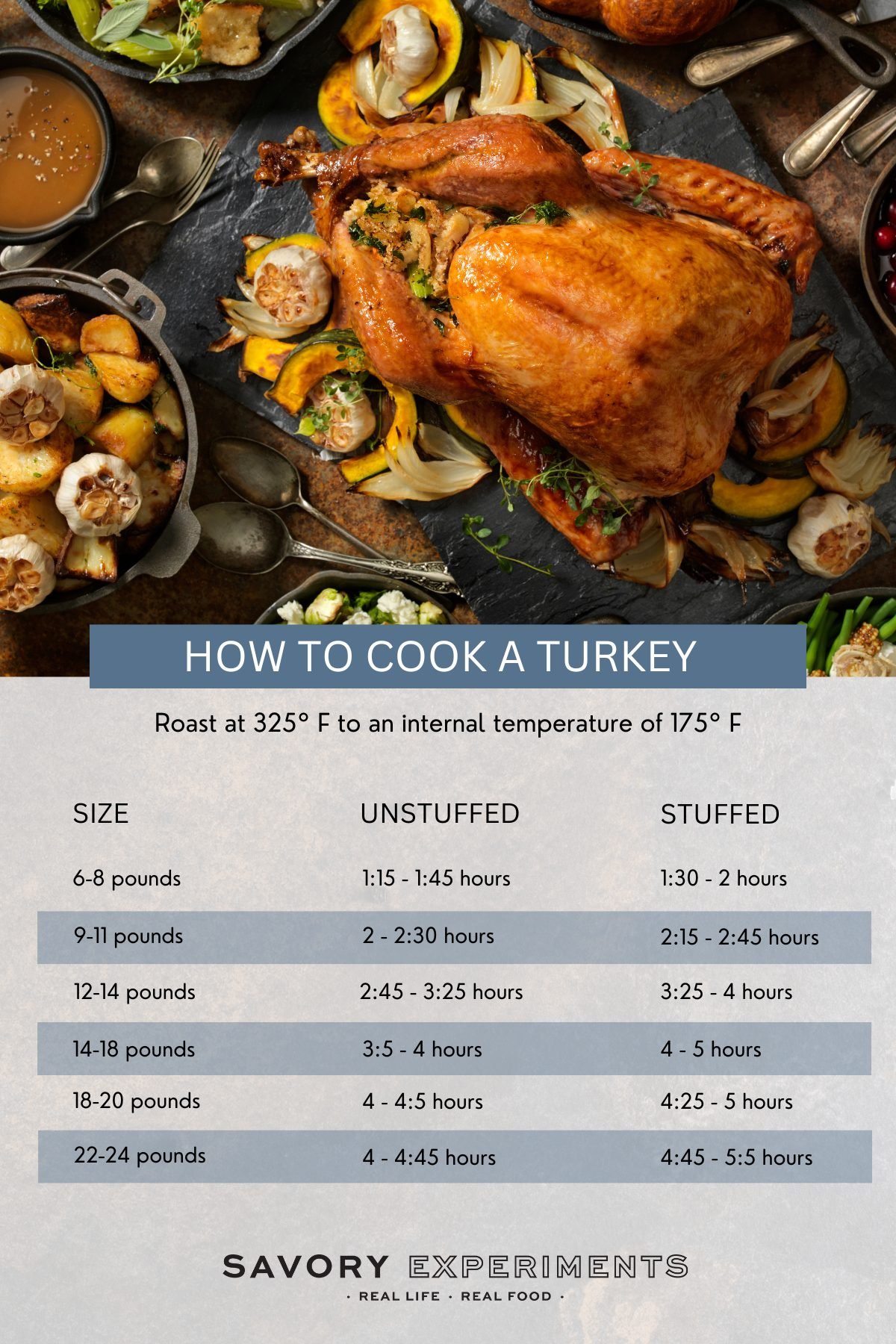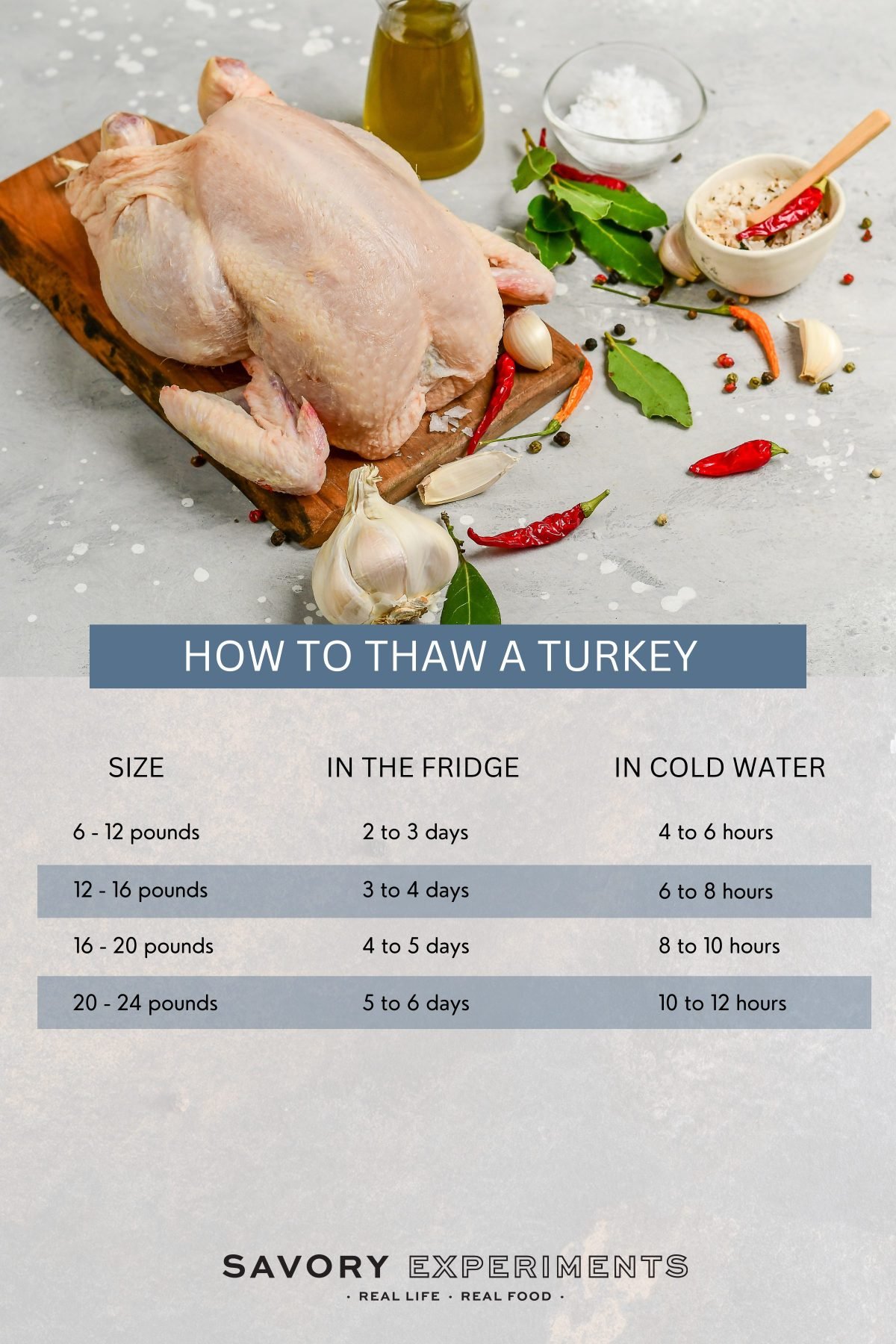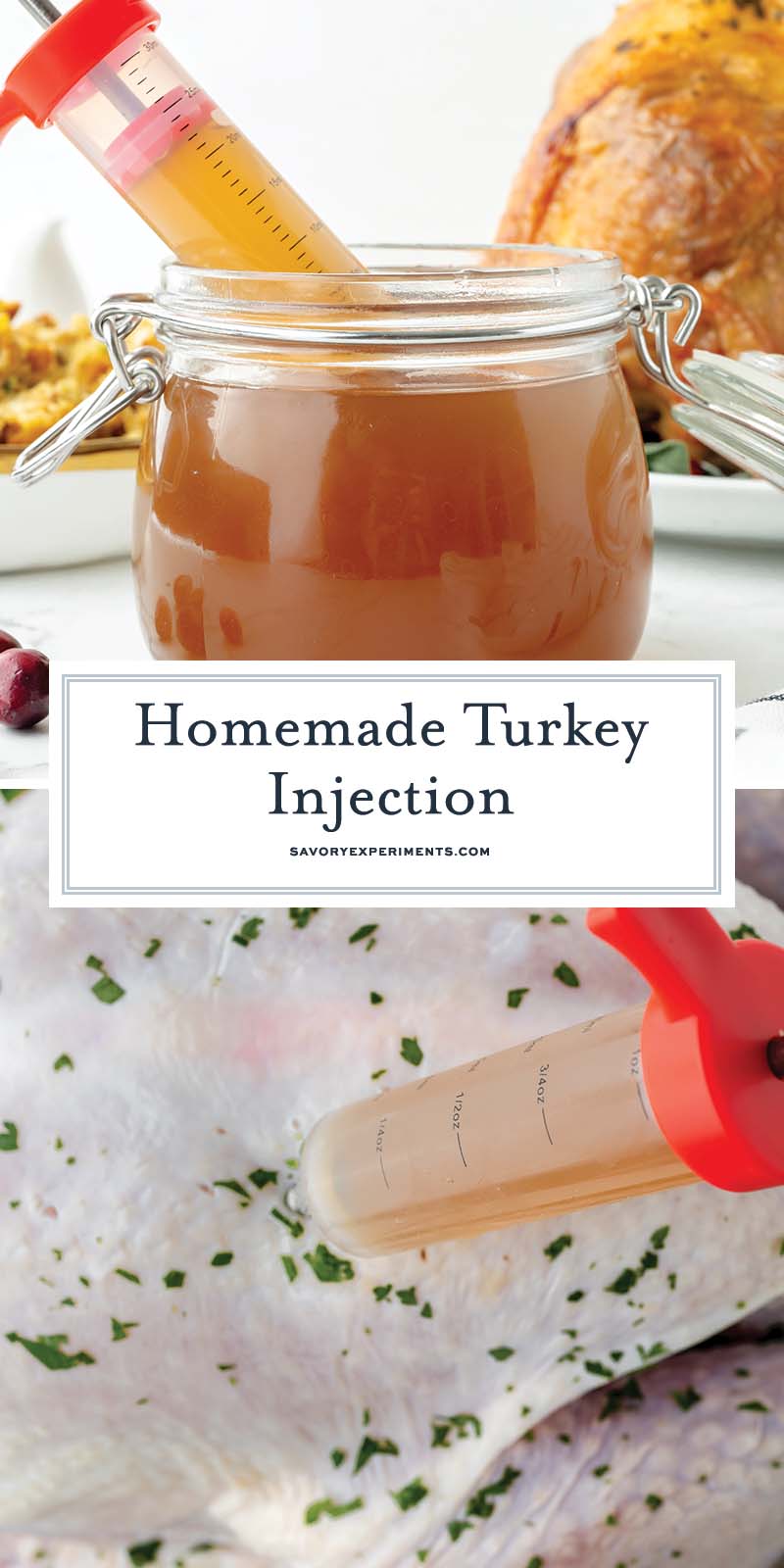You are trying to decide what size turkey to buy when you see a pretty display promising you the BEST Thanksgiving turkey you’ve ever tasted along with a bottle of turkey injection juice. Oh, those Cajun turkey people are SMART!
Injecting a turkey with a flavorful marinade is a popular technique for ensuring a juicy and flavorful bird. But when is the best time to inject your turkey? This question has sparked debate among culinary enthusiasts, with varying opinions on the optimal timing.
In this guide we’ll delve into the different perspectives on injecting a turkey, analyzing the benefits and drawbacks of each approach. We’ll also provide practical tips and insights to help you determine the best timing for your specific needs and preferences.
Injecting Before Cooking: The Convenience Factor
Injecting a turkey right before cooking offers several advantages:
- Convenience: This approach is the most convenient, especially if you’re short on time. You can simply prepare your marinade, inject the turkey, and get it straight onto the smoker or oven.
- Fresh Flavor: Injecting just before cooking ensures that the marinade flavors are at their peak, delivering a vibrant and delicious taste to your turkey.
- No Risk of Spoilage: Since the turkey is cooked immediately after injecting, there’s no risk of the marinade spoiling or compromising the safety of your meal.
However, injecting before cooking also has a potential drawback:
- Limited Flavor Penetration: The marinade may not have enough time to fully penetrate the thickest parts of the turkey, resulting in a less consistent distribution of flavor.
Injecting Before Brining: Enhanced Flavor Absorption
Some cooks prefer to inject their turkey before brining. This approach offers the following benefits:
- Deeper Flavor Penetration: The brining process helps the marinade penetrate deeper into the turkey, resulting in a more evenly distributed and intense flavor.
- Moisture Retention: Brining helps retain moisture in the turkey, ensuring a juicy and succulent bird.
However injecting before brining also has a potential drawback:
- Potential for Flavor Dilution: The brining solution may dilute the marinade flavors to some extent, reducing their impact on the final taste.
Injecting After Brining: Balancing Flavor and Moisture
Injecting after brining offers a middle ground between the two previous approaches:
- Balanced Flavor: The brining process helps the marinade penetrate deeper into the turkey, while the post-brining injection ensures a fresh and vibrant flavor.
- Optimal Moisture Retention: Brining before injecting maximizes moisture retention, resulting in a juicy and tender bird.
However, injecting after brining also has a potential drawback:
- Time Commitment: This approach requires additional time for both brining and injecting, which may not be feasible for everyone.
The best time to inject a turkey ultimately depends on your individual preferences and priorities. If convenience is your main concern, injecting before cooking is the way to go. If you prioritize the deepest flavor penetration, injecting before brining is a good option. And if you want a balance of flavor and moisture, injecting after brining is the ideal choice.
No matter which timing you choose, remember to use a high-quality marinade, inject evenly throughout the turkey, and cook it to the proper internal temperature for a safe and delicious meal.
How to Cook a Turkey with Injection
Though there are countless methods for cooking turkey, brining, rubbing, and injecting seem to be the most widely used ones.
Let me tell you a few things about the store bought Turkey Injection Juice:
- It is overpriced. Making your own turkey injection marinade is very inexpensive, and you most likely already have the ingredients.
- That bottle is something you will never use, and unless you make turkey every week, you’ll be throwing it out because it’s expired.
- They taste good because they are full of salt.
- In less than three minutes, you can make your own injection mix, save money, and avoid using too much salt.
- An injected turkey can be smoked, fried, roasted, or even air-fried.

Make Ahead & Storage
Make Ahead & Storage: You can make this blend up to two days ahead of time. Store in an airtight container in the fridge and whisk lightly before using.
Freezing: I do not suggest freezing this recipe. In fact, the alcohol in the beer won’t even freeze so you have turkey injection slush.


This recipe only requires whisking to be ready to eat; if you are concerned about the alcohol content, don’t be. It will get hot enough to burn off and leave behind nothing but flavor while the turkey roasts.
Just before lowering the bird into the oil, use the injection seasoning; try not to apply too much pressure. There aren’t any plugs to keep the seasoning locked in. Also, dab up any spots that spilled out and over with paper towels. The key to a fabulous fried bird is a dry skin.
The beauty of using an injection seasoning is that you don’t have to do it in advance. You can inject the bird right before cooking. In fact, I call it the lazy person’s version of brining.
It is not recommended to use it the night before as there is nothing to prevent the liquid and flavor from escaping. A good bit might absorb into the turkey meat, but some will get out. However, the turkey injector recipe can be prepared the night before and will be ready when you are!
Sure! The flavors from the drippings will just help to enhance the gravy. But here is a recipe for a standard turkey gravy and also our favorite red wine gravy.

Here are some of our favorite savory side dishes for your Thanksgiving dinner table, if you’re still in need of inspiration. We also have some ideas for alternative Thanksgiving entrees if you are serving a mixed lifestyle table.
And a few sweet Thanksgiving Dessert Ideas.
Once you’ve finished your turkey, try our recipes for leftovers, like Turkey Noodle Soup or Turkey Stock!
